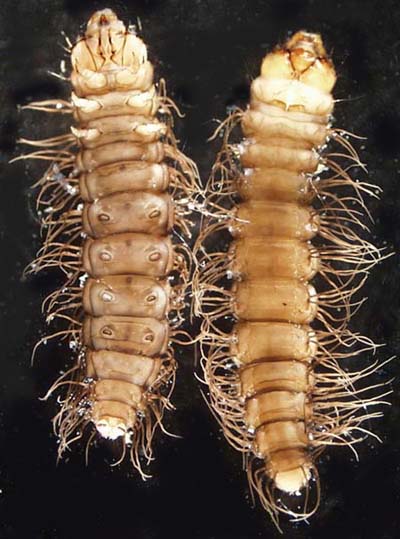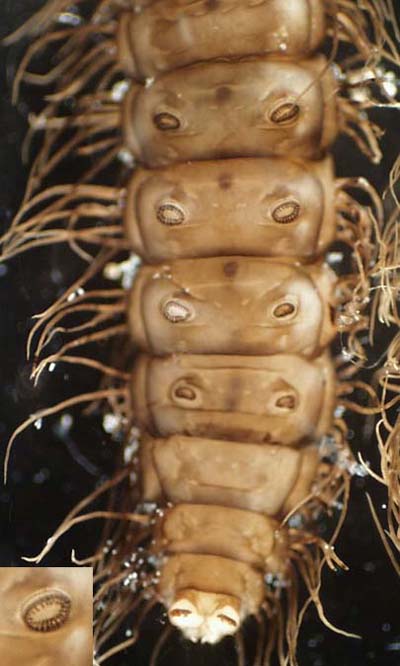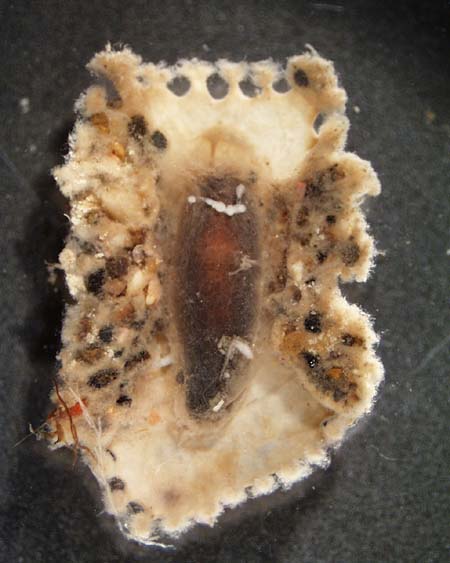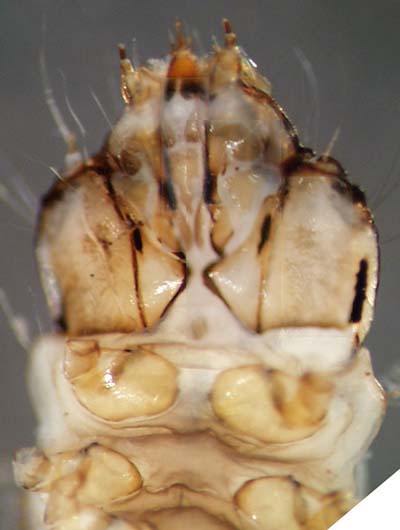
THE XERCES SOCIETY FOR INVERTEBRATE CONSERVATION Aquatic Invertebrates in Pacific Northwest Freshwater Wetlands |
| Identify taxa |
Petrophila spp. |
Most people think of caterpillars as terrestrial organisms that devour the leaves of plants, but a handful of caterpillars are aquatic. Most are only semiaquatic, living on aquatic vegetation, water surfaces, or along the margins. However, the eggs, larvae, and pupae of the genus Petrophila (in the family Pyralidae) all live completely under water. Adult Petrophila land on a rock, then crawl through the water to lay eggs. The larvae are well adapted for extracting oxygen from water, using clusters of finger-like gills on almost every segment of the body. They build tents from which they feed on nearby algae, then build a very tough covering to protect them while they pupate. These coverings look like yellowish scabs on rocky substrates in larger, fairly open streams and rivers. There are holes all around the edges to help move fresh, oxygenated water past the pupae. Nothing else really looks like an aquatic caterpillar. They probably look most similar to a caddisfly, but the plates of their head are arranged quite differently and each eye is composed of several spots instead of just one large eye. The key feature that Petrophila spp. share with terrestrial caterpillars is the extra pair of prolegs on the underside of the abdomen. These usually appear as bumps with lots of dark hooks arranged around the edges. They also have numerous clusters of long, finger-like gills all over their body. |
Larval size: medium |
|
 |
© 2007 Xerces Society
Contact info@xerces.org




